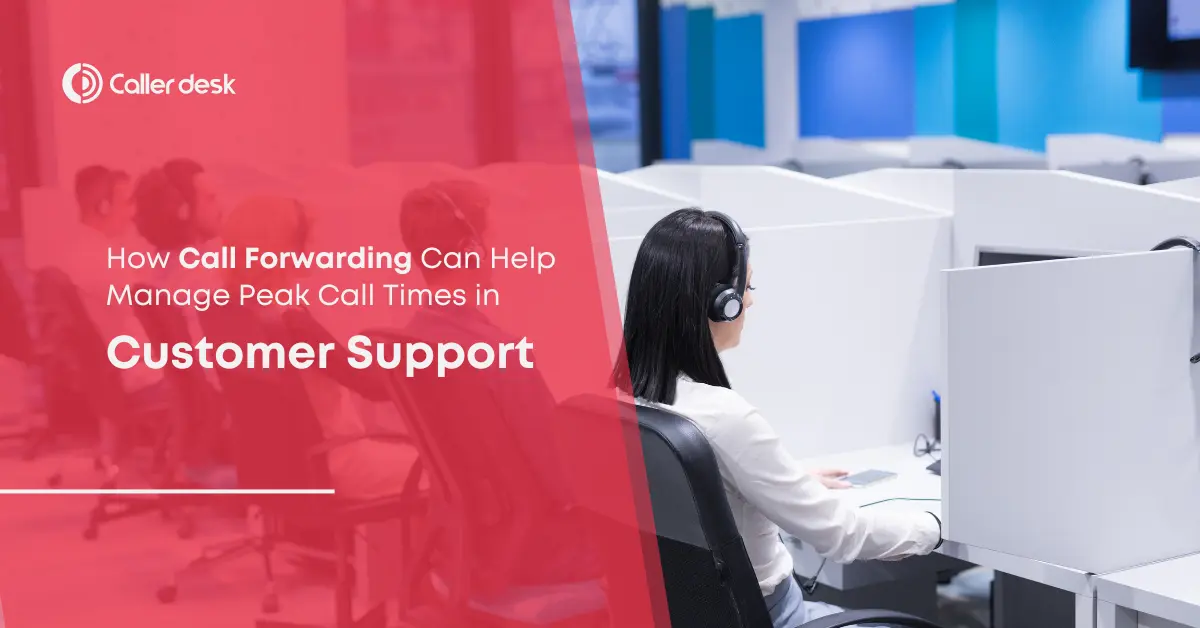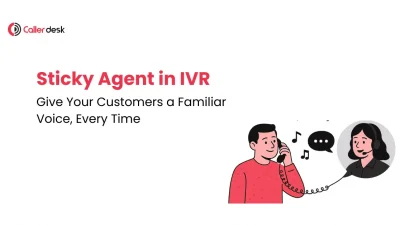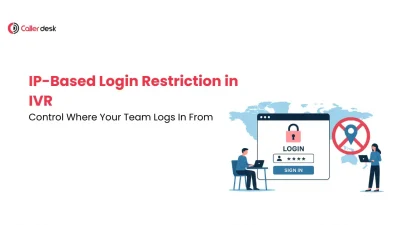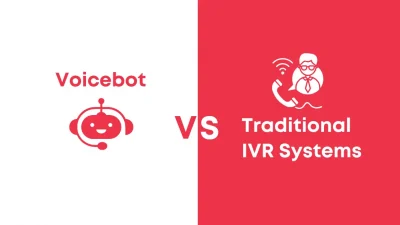Managing customer calls during peak times is one of the most critical challenges businesses face today.
Picture this: your customer support team is inundated with inquiries during a major sale, a holiday rush, or a product launch. Call volumes skyrocket, wait times increase, and customer frustration starts to build.
The solution? Call forwarding—a game-changing tool that ensures every customer call is answered promptly and efficiently.
This simple yet powerful feature enables businesses to redirect calls to the right agent, department, or even a backup call center, keeping customer support running smoothly. Let’s explore how call forwarding can help businesses manage peak call times, enhance customer satisfaction, and improve operational efficiency.
What is Call Forwarding?
Call forwarding allows incoming calls to be redirected from one number to another, ensuring that calls are answered even when the primary recipient is unavailable. Whether it’s forwarding calls to mobile phones, different departments, or remote team members, call forwarding ensures seamless communication.
Key Features of Call Forwarding:
- Flexible Routing: Direct calls to any device, location, or team member.
- Customizable Options: Configure call forwarding rules based on business hours, caller type, or staff availability.
- Uninterrupted Connectivity: Maintain consistent communication during peak call times or emergencies.
How Call Forwarding Helps Manage Peak Call Times
1. Minimize Missed Calls
During peak hours, missing customer calls can mean losing potential sales or damaging trust. Call forwarding ensures that calls are automatically routed to available agents, departments, or backup teams.
Scenario: A retailer launching a Black Friday sale experiences a surge in calls. With call forwarding, overflow calls are redirected to available agents or a temporary call center.
Impact: Zero missed calls and maximized sales opportunities.
2. Balance Call Traffic Across Locations
For businesses operating in multiple locations or across different time zones, call forwarding helps distribute calls efficiently.
Example: An e-commerce company with support teams in India, the US, and the UK uses call forwarding to route calls based on the caller’s location and time zone.
Benefit: Reduced wait times and a localized support experience for customers.
3. Handle Overflow with Automated Systems
Virtual receptionists or automated IVR systems can handle overflow calls during peak times. These systems greet customers, gather information, and route calls to the appropriate team or department.
How It Works: CallerDesk’s AI-Powered IVR ensures customers are connected to the right agent or department without delays, even during high call volumes.
Outcome: Faster resolutions and less strain on your support team.
4. Provide Seamless After-Hours Support
Customer inquiries don’t stop when the office closes. Call forwarding ensures after-hours calls are directed to on-call staff, external call centers, or voicemail systems.
Scenario: A healthcare provider routes after-hours calls to on-call doctors, ensuring patients receive immediate assistance.
5. Improve Customer Satisfaction with Reduced Wait Times
Long hold times are a major pain point for customers. Call forwarding spreads incoming calls across available agents, minimizing wait times and enhancing the customer experience.
Data Insight: Businesses using CallerDesk’s call forwarding report a 30% reduction in average wait times.
6. Enhance Scalability as Business Grows
As your business expands, so does your need to handle higher call volumes. Call forwarding is scalable, allowing you to easily adapt to increased demand without additional infrastructure.
Example: A startup that initially forwards calls to a single line can upgrade to CallerDesk’s multi-line forwarding feature as their team grows.
7. Monitor and Optimize with Advanced Analytics
Modern call forwarding systems like CallerDesk offer detailed analytics to help businesses understand call patterns and improve operations.
Key Metrics Tracked:
- Call volumes during peak hours
- Average wait times
- Call resolution rates
Actionable Insight: Use this data to adjust staffing, train agents, or refine call routing rules for better performance.
Why Choose CallerDesk for Call Forwarding?
CallerDesk offers industry-leading call forwarding solutions designed to meet the unique needs of businesses, whether small startups or large enterprises.
1. Advanced Analytics and Reporting
With CallerDesk, you gain real-time insights into call patterns, agent performance, and customer behavior, enabling data-driven decisions that improve efficiency and satisfaction.
2. Seamless CRM Integration
CallerDesk’s call forwarding integrates effortlessly with popular CRM platforms like Salesforce and HubSpot, allowing agents to access customer history and provide personalized support.
3. AI-Powered Call Routing
Utilize CallerDesk’s AI-driven call routing to ensure that customers are connected to the most qualified agents, reducing resolution times and boosting satisfaction.
4. 24/7 Customer Support
CallerDesk’s dedicated support team is available around the clock to help you set up, manage, and optimize your call forwarding system.
5. Flexible and Scalable Solutions
Whether you’re managing a small team or a global operation, CallerDesk’s solutions grow with your business, ensuring you’re always prepared for increased call volumes.
Best Practices for Using Call Forwarding
1. Combine with IVR Systems
Integrate call forwarding with an IVR system to guide callers and route them based on their needs.
2. Monitor Performance Regularly
Use analytics to identify trends and optimize call routing for peak efficiency.
3. Train Your Team
Ensure agents receiving forwarded calls are trained to handle a variety of customer inquiries.
4. Use Multichannel Support
Pair call forwarding with live chat, email, or social media to manage customer inquiries holistically.
Ready to transform the way you handle peak call times?
Get Started with CallerDesk Today!
- Schedule a Free Demo to see our advanced call forwarding features in action.
- Sign Up for a Free Trial and experience the benefits firsthand.
- Contact Us Now for a personalized consultation tailored to your business needs.
Conclusion
Managing peak call times is no longer a challenge with the right call forwarding solution. By redistributing calls, reducing wait times, and ensuring seamless after-hours support, call forwarding enhances customer satisfaction and operational efficiency.
CallerDesk’s advanced call forwarding solutions are designed to empower businesses, offering scalability, advanced analytics, and unparalleled customer support. Don’t let peak call times overwhelm your team—partner with CallerDesk and take your customer support to the next level.
Frequently Asked Questions
1. What is call forwarding, and how does it work?
Call forwarding is a feature that redirects incoming calls from one number to another. For instance, calls to your business’s main number can be forwarded to mobile phones, other departments, or an external call center, ensuring no call goes unanswered.
2. How does call forwarding help during peak call times?
Call forwarding distributes calls to available agents, departments, or locations, preventing missed calls, reducing wait times, and maintaining smooth customer support during high-demand periods like sales events or holidays.
3. Can call forwarding handle calls across multiple locations or time zones?
Yes, call forwarding allows businesses to route calls across multiple locations and time zones, ensuring customers are connected to available agents regardless of their geographical location.
4. How does CallerDesk’s call forwarding differ from other providers?
CallerDesk offers advanced features such as AI-powered call routing, real-time analytics, seamless CRM integration, and 24/7 support, making it a superior solution for managing peak call times effectively.
5. Is call forwarding scalable for growing businesses?
Absolutely. Call forwarding systems like CallerDesk are highly scalable, allowing businesses to add new lines, team members, or departments as they grow without needing complex setups or additional infrastructure.





